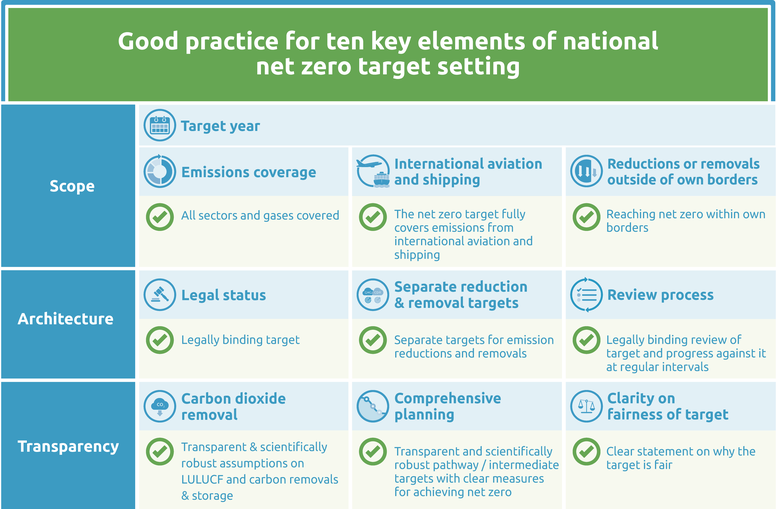Net zero targets
Summary
We evaluate Japan’s net zero target as: Poor
Japan’s 2050 net-zero target was published in October 2020, which was subsequently integrated into the amended Promotion Act of Global Warming Countermeasures in 2021 (Government of Japan, 2021a). The Green Growth Strategy was accordingly revised in June 2021 to provide further information on sector-level roadmaps towards net zero, which was reflected on Japan’s updated Long Term Strategy submitted before COP26 (Government of Japan, 2021c).
However, these documents still lack several details on key elements that ensure effectiveness and transparency of net zero targets and thus have room for further improvement. For this reason, the CAT rates Japan’s net zero target as “Poor”.
CAT analysis of net zero target
Scope
- Target year – Japan aims to reach net zero 2050.
- Emissions coverage – The target covers all GHG emissions (i.e., the 7 Kyoto gases: CO2, CH4, N2O, HFCs, PFCs, SF6, NF3) and all sectors of the economy (excluding international bunkers).
- International aviation and shipping – The target excludes both international aviation and shipping but Japan recently committed to achieving net zero emissions both in international aviation and shipping at the recent ICAO and IMO meetings (see our international aviation and shipping sector assessments for further details).
- Reductions or removals outside of own borders – Japan reserves right to use of international offset credits to meet its net zero target but the extent of this usage remains unclear.
Target architecture
- Legal status – Japan passed its net zero target in the amended Promotion Act of Global Warming Countermeasures on 26 May 2021. The net zero target is included in the Japan’s Long-term Strategy.
- Separate reduction & removal targets – Japan provides no information on its intention to communicate separate emission reduction and removal targets.
- Review process – Japan has a legally-binding process under the Promotion Act to review the progress up to 2030 towards the net zero target in 2050 but reviewing the net zero target itself is not legally-bound as it is not enshrined in a law but only stipulated in policy documents.
Transparency
- Carbon dioxide removal – Japan provides no information on its intention to communicate transparent assumptions on carbon dioxide removals. However, the Green Growth Strategy provides that the government will regularly review the prospects of new technologies which assumingly include CDR and other technological removal options (METI, 2021c).
- Comprehensive planning – While Japan’s net zero target and measures have been developed and described in its Green Growth Strategy as well as Long Term Strategy, its pathway to net-zero particularly after 2030 towards 2050 remains unclear. The absolute reductions as well as removal targets in 2050 are not clearly communicated.
- Clarity on fairness of target – Japan provides no information on its intention to explain the target’s fairness, nor is the gap between realistic net zero target and a fair target explained.
Good practice
The Climate Action Tracker has defined the following good practice for all ten key elements of net zero targets. Countries can refer to this good practice to design or enhance their net zero targets.
Further analysis
Latest publications
Stay informed
Subscribe to our newsletter





